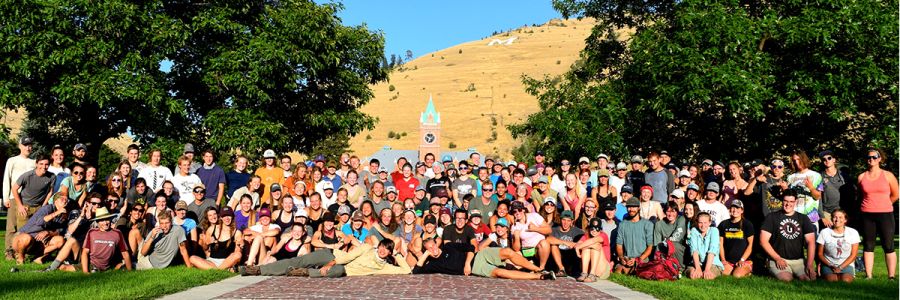Impact on Retention
One of the highlights of the FWE is the growing involvement of student alumni in the program. Each year former FWE Ñý¼§Ö±²¥ return as organizing staff members and guides for the trips.
Campus Recreation and the Wilderness Institute's goal is to support a program run by Ñý¼§Ö±²¥, for Ñý¼§Ö±²¥. In this way the FWE program impacts the University’s continuing efforts to increase retention by fostering peer networks and establishing a sense of engagement with the UM campus, Missoula and the surrounding wilderness areas.
“Being able to arrive on campus one day not knowing anyone, and then return four days later having bonded with strangers in a wilderness setting was an amazing way to integrate into the school community,” said Zoe Leake, a former FWE participant, who returned to the program as a student leader.
The retention rates of Ñý¼§Ö±²¥ who participated in FWE are as much as 18.5% higher compared to the rates of those who did not.
Retention Rates
Retention rate is the percentage of Ñý¼§Ö±²¥ who return to the same institution for their second year.
| Cohort Year |
At 1 year (SOP) |
At 2 years (JUN) |
At 3 years (SEN) |
At 4 years (5th Yr) |
|---|---|---|---|---|
| 2014 Cohort |
|
|
|
|
| FWE Participants | 84.6% | 63.5% | 69.2% | 17.3% |
| Non-Participants | 72.1% | 58.4% | 52.8% | 24.1% |
| Difference | 12.5% | 5.1% | 16.4% | -6.8%* |
| 2015 Cohort | ||||
| FWE Participants | 78.5% | 73.8% | 69.2% | 13.8% |
| Non-Participants | 68.7% | 57.2% | 50.7% | 19.4% |
| Difference | 9.8% | 16.6% | 18.5% | -5.6%* |
| 2016 Cohort | ||||
| FWE Participants | 78.4% | 63.6% | 59.1% | |
| Non-Participants | 68.5% | 56.7% | 51.1% | |
| Difference | 9.9% | 6.9% | 8.0% | |
| 2017 Cohort | ||||
| FWE Participants | 80.4% | 69.6% | ||
| Non-Participants | 64.6% | 54.6% | ||
| Difference | 15.8% | 15.0% | ||
| 2018 Cohort | ||||
| FWE Participants | 72.5% | |||
| Non-Participants | 68.9% | |||
| Difference | 3.6% |
*This negative number may indicate that a number of Ñý¼§Ö±²¥ within this cohort of the Freshmen Wilderness Experience have already graduated (and possibly at a higher rate than the general population). More data analysis is needed.
Graduation Rates
Graduation rate is the percentage of a school's first-time, first-year undergraduate Ñý¼§Ö±²¥ who complete their program within 150% of the published time for the program.
Persistence Rates
Persistence rate is the percentage of Ñý¼§Ö±²¥ who return to college at any institution for their second year.
